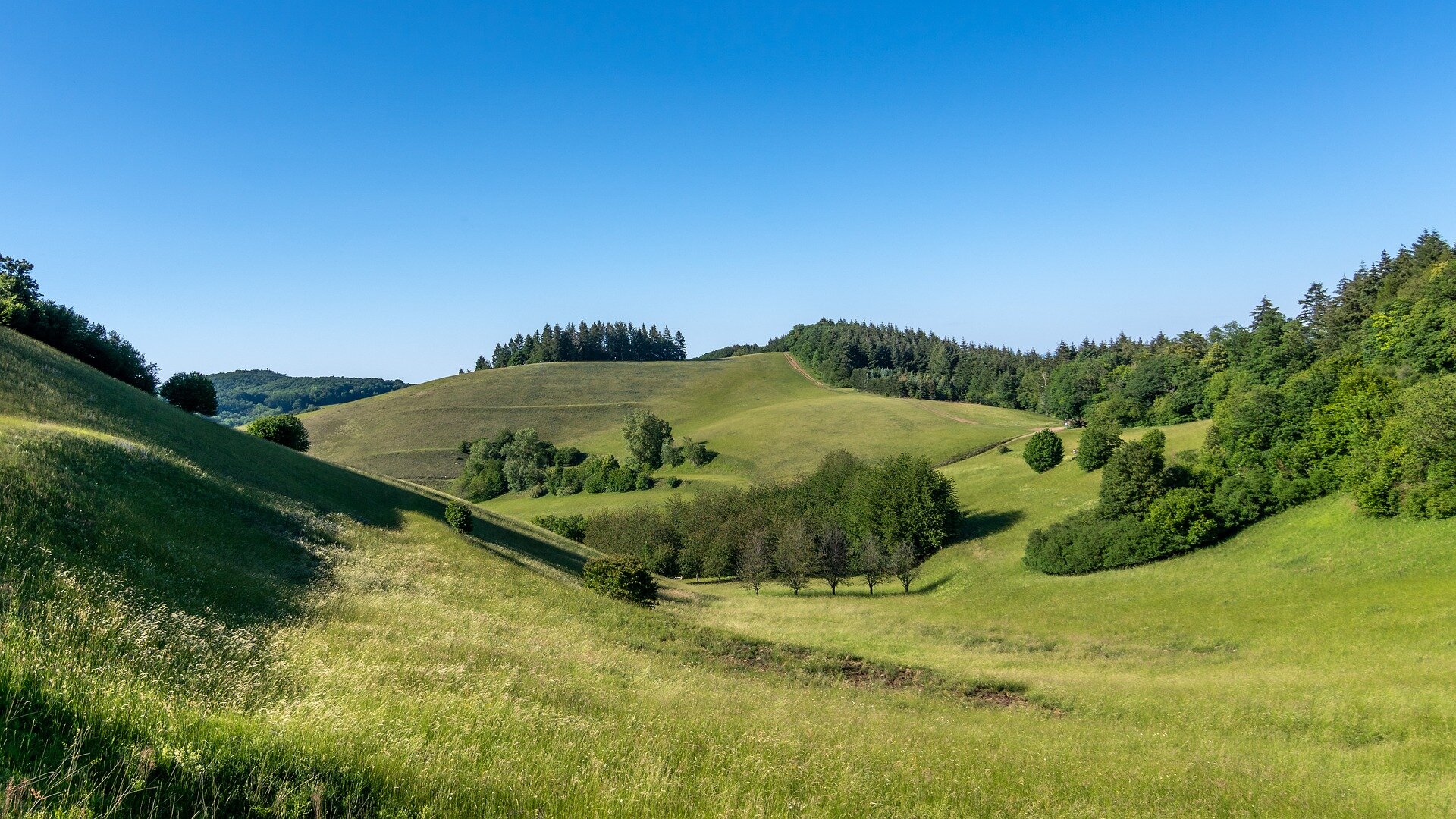
Geology
Only rarely does the volcanic origin of a landscape become as clear as it does for the Kaiserstuhl.
Only rarely does the volcanic origin of a landscape become as clear as it does for the Kaiserstuhl. Standing alone in the Upper Rhine Plain, it towers over the surrounding landscape by around 350 metres. Volcanism dates back to about 21 million years ago, with the main activity taking place between 19 and 15 million years ago. The boundary between the Earth's crust and mantle is shifted upwards in this area, and the crust is about 6 km thinner than usual. This allowed magma to emerge in the fracture zone of the Upper Rhine Graben. Partly explosive and violent eruptions of several stratovolcanoes, whose summits are no longer preserved today, left behind lava flows up to 1.4 kilometres long, tuff layers, lava bombs and countless minerals and rock types. The most common is tephrite as an igneous rock, followed by essexite as a rock that has cooled underground. In Bötzingen, phonolite is mined for special applications and used finely ground for filter technology, concrete additives and as rock flour for animal feed and horticulture. Rare rocks such as limburgite and carbonatite as well as gangue rocks such as moonshaldeite and bergalith are found throughout Europe, in part only in the Kaiserstuhl. Rare minerals such as garnet, glass opal and koppite are a special attraction for those interested in minerals.
The eastern part of the Kaiserstuhl is connected to the Tuniberg by a fault zone and consists of uplifted sedimentary rocks. Limestones from the Jurassic and Tertiary periods can be found here. In the contact zone with the hot volcanic part, a marble-like, particularly beautiful rock was formed from Tertiary sediment, which melted and then solidified again. Thermal springs at the foot of the Badberg with a constant temperature of 21°C still bear witness today to the heat that prevails in the earth's interior.
It was not until the Ice Age up to 12,000 years ago that the volcano was covered by loess, which gave it its present surface. Today, around 85 % of the rock layers are covered by loess. Mammoth tusks and stone blades of Ice Age hunters have already been found in the loess in several places and bear witness to how early man already lived here.